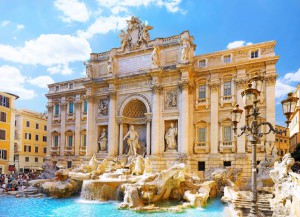Italy
Italy counts 50 UNESCO World Heritage Sites within its borders, the most of any country on the World Heritage List. The Convention Concerning the Protection of the World Cultural and Natural Heritage, adopted by the UNESCO General Conference on November 16, 1972, states that the organization is the official designator of these sites. The goal of the Convention is to identify, according to precise criteria, areas, zones and places containing unique characteristics, of particular importance in regards to culture, archaeology, environment or landscape. Italy’s World Heritage Sites are well-known. The Dolomites; The City of Verona; Ferrara and the Po River Delta; the Historic Centers of San Gimignano, Florence and Rome; Hadrian’s Villa and the Villa D’Este at Tivoli; the archaeological area of Pompeii, Herculaneum and Torre Annunziata; the Sassi (rupestrian architecture and churches) of Matera; the Amalfi Coast and the Aeolian Islands are just some among many others. All 50 sites have been, at one time or another, travel destinations for those seeking out history, art and culture in the Bel Paese. Italy, a land of art and history Italy has been, since antiquity, the center of history, culture and art. The museums, collections and archaeological sites reveal countless tokens of the past and the many civilizations that have passed across this country, evidence of which is still inextricably woven into the present day landscape. Artistic wonders can be found everywhere, and every corner of the country holds countless and wonderful surprises. The artistic and cultural heritage is one of the most valuable in the world. Italy has more cultural UNESCO World Heritage Sites than any other country. Rome, Florence, Assisi, Venice, Siena, Pisa, and Naples are its most renowned cities of art, but the whole country can boast towns of breathtaking beauty, as these numbers demonstrate: 95.000 monumental churches, 40.000 forts and castles, 30.000 historical residences with 4.000 gardens, 36.000 archives and libraries, 20.000 historical cities and towns, 5.600 museums and archaeological sites, and 1.500 convents. Italy offers a rich combination of masterpieces from different areas, blending landscape and culture, history and art, architecture and city planning – it offers an exciting journey through time, from the Ancient Greeks and Romans to the present day, which is also filled by a wealth of art and culture.

